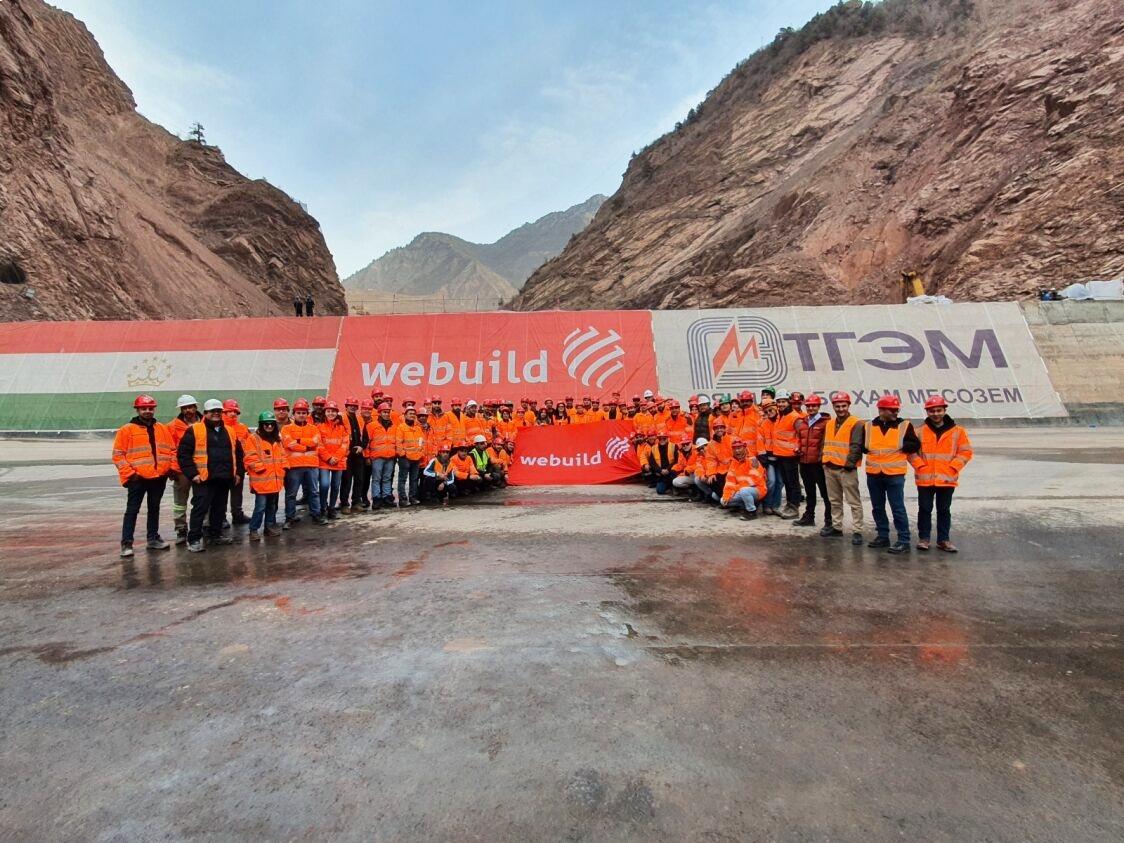December 22, 2023
Webuild: pad foundation of Rogun Dam in Tajikistan completed, among the most complex engineering phases applied to large dams
It will be the world's tallest dam, helping double Tajikistan's power generation capacity
Milan, December 22, 2023 – One of the most challenging engineering phases applied to large dams has been successfully completed: at the Webuild construction sites for the in Tajikistan, which will be the world's tallest at 335 metres, the pad foundation on which the dam’s core will rest has been completed. It has been built in a context with various technical, geological, climatic, and logistical complexities, representing an innovative solution at a global level. The plant will allow Tajikistan to double its electricity generation capacity. It has already been partially commissioned, with two turbines being activated between 2018 and 2019, to contribute to the country's economic development as early as the construction stages.
The new dam stands on the bed of the Vakhsh River, about 90 kilometres from the capital Dushanbe. Works on Lot 2 of the Rogun Hydropower Plant are being carried out by Webuild on behalf of OJSC Rogun HPP and have now reached 35% of the total. The dam is made of rockfill with a clay material core, the so-called Concrete Pad in RCC. It will have a total volume of about 80 million cubic metres, with a crest length of 800 metres. When completed, the plant will have a total installed capacity of 3,600MW, provided by 6 Francis Turbines of 600MW each.
The completion of the dam’s pad foundation allows construction of the dam's actual core to begin. The RCC Pad has significant dimensions: it is divided into 8 blocks, each 20 to 25 metres long, with a total length of 180 metres, is 120 metres wide, from bank to bank, developing in height to a maximum of 22 metres. About 290,000 cubic metres of rolled, compacted concrete (RCC) was used for its construction: equivalent to slightly less than the volume of 120 Olympic-size swimming pools.
Many innovative solutions have been applied as part of this project. In addition to the solutions adopted for the realization of the RCC Pad, the "Flyng Belt System," a material transport system that will make it possible to streamline the next processing stages, ensuring rapid and sustainable transport of the materials that will be used for the construction of the dam, was also developed. The Flyng Belt System is positioned on the left bank of the dam's downstream area, in the form of a suspended, high-capacity conveyor belt attached to 65 mm diameter steel ropes and is anchored to two loading and unloading stations located at its ends. The system will extend for a total 650 metres, offering a nominal transport capacity of 3,000 tons per hour. It will fit into a system of conveyor belts for transporting materials to the dam that will measure in total about 10 kilometres.
Rogun confirms Webuild Group's world-scale leadership in the water sector, where it is active in the entire water cycle, supplying water for drinking and irrigation purposes to wastewater treatment. With its subsidiary Fisia Italimpianti, the Group is a world leader in sustainable design and construction of water treatment and desalination plants. Currently, it is building ongoing projects such as the , the largest dam in Africa which it is building on the Blue Nile in Ethiopia, and , the largest "environmentally-friendly" energy generation project underway in Australia. Among the completed works, there's: the , built to quench the thirst of the city of Las Vegas and the surrounding areas through an elaborate system that supplies water from Lake Mead.
